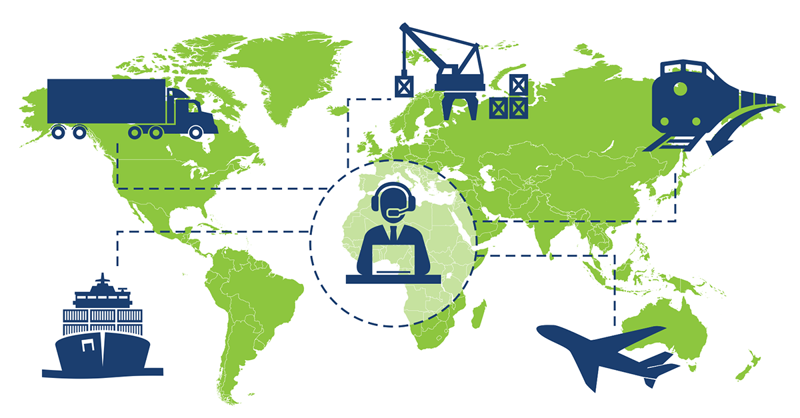Consumers don’t care about global parcel logistics in the same way they don’t care about septic systems, until they don’t work.
eCommerce is driving unprecedented parcel shipping volumes around the globe. It has created a virtual parcel tsunami at the borders that affects everyone in the retail supply chain including suppliers, freight forwarders, customs agents, carriers, and customers. The complexity of global parcel shipping is increasing, but so is the consumer demand for on-time delivery. The race is on to streamline this process.
The trend toward smaller, more frequent shipments shows no sign of abating. A recent study by Pitney Bowes indicated that worldwide parcel volumes grew 17 percent last year to 74 billion. China’s parcel volumes alone grew 28 percent to 40 billion. 66 percent of consumers are more willing than ever to shop online and 40 percent purchase goods from other countries. They don’t want to have to care about the intricacies of global logistics. They just want free shipping and they want deliveries on time. What’s all the fuss about? Get it done or they will buy from another vendor.
“Retailers are on the hook to cater to this expectation of fast and free-er shipping,” according to Rajeeb Mohapatra, Senior Vice President, Cross Border and Shipping Solutions, Pitney Bowes Commerce Services. “As part of our recent global retailer study, we found that 83 percent of the high growth cross-border retailers are constantly looking at diversifying their carrier network and leveraging vendors’ turnkey marketing programs to offer more choices in their global shipping experience."
Omnichannel retail strategies are extending direct to consumer drop shipping from domestic suppliers to international suppliers. Increasingly, freight forwarders are helping them by printing and applying last-mile carrier labels to cartons at international origin shipping points, consolidating them, clearing them through customs at the destination ports, and then injecting them into domestic parcel networks. This is referred to now as the “cargo chain.”
And it’s not just limited to international inbound to U.S. shipments, according to Bobby Shome, Vice President, Microlistics (a WiseTech Global subsidiary operating in Europe). “Online shopping in Europe is still growing at double digits year-over-year for those countries that are embracing eCommerce. European consumers are not so concerned where their items are shipped from but expect that retailers work with carriers and partners to offer reliable delivery services.”
A lot of things need to be considered for the cargo chain to work:
Landed Costs Calculations: Whether they charge consumers for shipping or not, retailers need to know the “landed cost” of what it takes to bring parcels across borders. Landed costs include shipping, duties, taxes, and other fees. These are difficult to calculate with certainty, especially during the checkout process.
Customs Clearance: Customs agents have had to gear up to handle the shift from clearing large containers bound for single consignees to individual packages within those containers destined for many consignees. Shippers need to keep current with regulatory trade rules and de minimis charges. Without accurate and compliant cross-border documentation, it is easy for shipments to be delayed in customs. Getting it very wrong can result in sanctions.
Tracking: As goods move from one mode to another, consolidated, deconsolidated, cross-docked, and reloaded, documentation and shipping data multiplies into disparate formats and standards that are difficult to correlate and track. And all the more so with increases in parcel shipping transaction volumes. Freight forwarders dream about the digital contracts that blockchains could realize, but in the real world, tracking individual packages as they travel internationally is a neat trick.
Border Security: After 9/11, regulatory mandates were put in place to make shippers responsible for ensuring international shipments were not bound for consignees on any government watch lists. Vigilant shippers have implemented and automated restricted/denied party and embargoed country screening processes as part of their international compliance program.
The complexity of making all this work is daunting for most shippers. That is why they tend to outsource global shipping processes to the experts: freight forwarders. But even freight forwarders have been taken by surprise by the demand for last-mile parcel delivery. Most have traditionally dealt with ocean and air cargo management, handing off loads to freight carriers. Others have stepped up to offer innovative solutions.
For example, SEKO Logistics offers a first-mile to last-mile international parcel delivery service. UPS and FedEx couple their international freight forwarding and parcel delivery operations into end-to-end solutions. UPS TradeDirect and FedEx IPD services make it easy for retailers to deliver on global delivery promises. Pitney Bowes’ BorderFree and Newgistics services help automate landed cost calculations, cross-border compliance, and last-mile parcel delivery. WiseTech Global is helping freight forwarders streamline cargo chains with a platform that integrates multiple shipping modes, including ocean, freight, and parcel.
eCommerce as a global phenomenon is just getting started. Logistics and technology companies that can simplify complex international processes will emerge as winners in the race to deliver on time and at a cost retailers can absorb.
